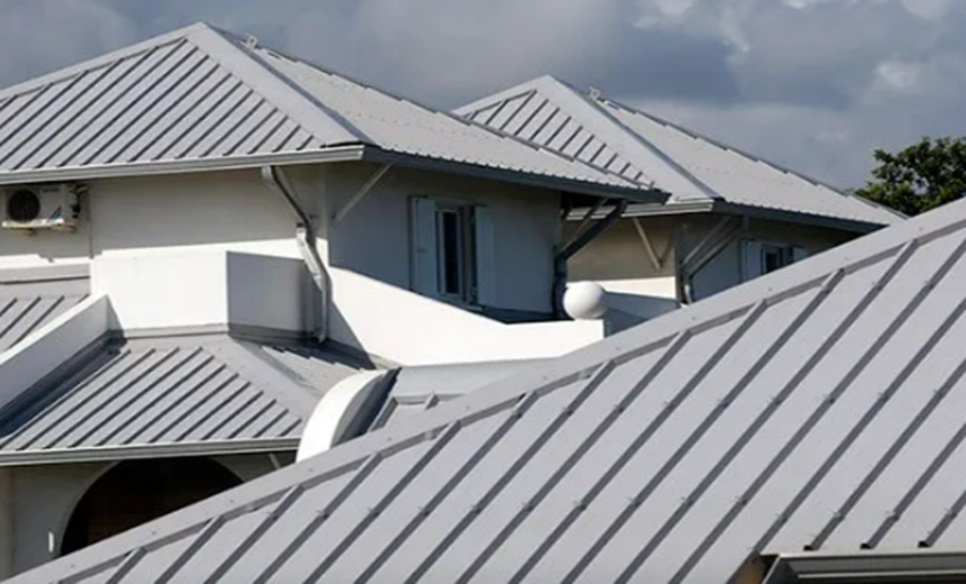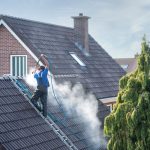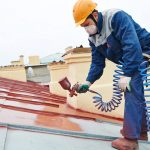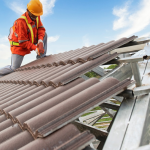Hurricane-Proof Roofs: Material, Type, and Design
The biggest threats to prepare for Heavy rains caused by wind
The water damage caused by wind-driven heavy rain is not the same as a flood. It’s rain that has been created and moved about by the winds. It’s important to know that wind-driven heavy rain may not be covered by your insurance. The rain would not have reached your home without the wind. It is crucial to protect your home and understand your coverage before a storm.
Debris Impact
The impact of debris picked up by the wind and blown into your home or roof can be another unexpected event during hurricane season. Hurricane forces can also transport items to your home or roof. Look for low-hanging or dead branches that could become projectiles during a storm. A tree branch can damage your roof just as much as hurricane winds.
High Winds and Uplift
Hurricanes are known for their high winds and uplift, which can leave a trail of destruction. No matter what roofing material you select for your home, make sure it is checked and repaired as necessary. This will help to prevent any weak points where hurricane winds or uplift could tear apart your roof.
Tornados
The conditions during hurricane season are often conducive to tornadoes. As with hurricanes, understanding and choosing the right roofing materials and designs for your home is the best way to ensure your roof will be protected against a storm.
Roofing Materials: What building material should you use? Continue reading to find out more about the options available.
Metal Roofs
Let’s begin with the best: Metal roofing. Metal roofs have been shown to withstand winds of up to 140 mph. Metal roofs are the best option for protecting your home from Category 4 hurricanes. Metal roofing is a popular roof for areas that are prone to hurricanes.
When it comes to metal roofing design guidelines, there are several things to take into consideration, such as your roof deck, slope of the roof, and roof form. Metal roofs are structural panel roof systems that work best when installed professionally by people who know how to lay out the panels and attach them with the proper attachments.
Incorrect installation is the main reason for metal roof failure. When you are considering an upgrade to your roof, choose a roofing contractor who understands the metal roof design.
Asphalt Shingles
Most roofers and homeowners know the common Asphalt Shingle Roofs. These roofs are cost-effective and can withstand wind speeds of over 100 mph.
FEMA recommends using nails instead of staples to install asphalt shingles if your home is located in an area prone to hurricanes and winds. This will help secure the asphalt roof shingles in a manner that is more likely to survive the hurricane season and accompanying storms.
Roof Design – How should you design your roof?
A roof that is ideal for hurricanes involves more than just the roofing material. The roof design also plays a role. Consider these options when you’re designing, building, or rebuilding your roofing system.
Your Roof Shape
Hip roofs are the best way to protect against hurricanes and gusts. This roof is more stable than the gable because it slopes up from all sides. It also doesn’t have vertical ends.
Your Roof’s Slope
Choose a roof that has a 30-degree angle to withstand wind and storms. This roof is resistant to uplift that can happen when an air current comes into contact with a flat roof. This phenomenon can also occur when the air pressure is higher under the roof than above.
This post was written by Ted Williams! Ted is the owner of A Old Time Roofing which offers the best roofers Clearwater FL! Ted is a Master Elite Weather Stopper GAF Roofing Contractor, a double award winner of Best Steep-Slope Contractor from GAF and achiever of Master Elite Consumer Protection Excellence from GAF. He has been serving the Pinellas County area since 1978. Old Time Roofing has a tradition of quality workmanship, servicing residential and commercial properties.















